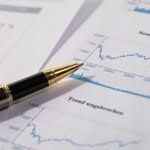 Taking the path of least resistance doesn’t always lead to places worth going. In fact, it often leads to places that are better to avoid. Repeatedly skipping work to sleep in and living off credit cards will eventually lead to the poorhouse.
Taking the path of least resistance doesn’t always lead to places worth going. In fact, it often leads to places that are better to avoid. Repeatedly skipping work to sleep in and living off credit cards will eventually lead to the poorhouse.
The same holds true for monetary policy. In particular, cheap credit policies that favor short-term expediency have the effect of layering society up with an abundance of long-term mistakes. Artificially suppressed interest rates via central bank asset purchase schemes are not without consequences.
What’s more, once set in motion these consequences don’t stop until they’ve fully run their course. The booms of plentiful credit must always be followed by the busts of unserviceable debt. As more and more debt drifts into arrears the debt structure breaks down. Yet when the actual tipping point is crossed is often unclear until after the fact.
Quantitative easing “officially” ended over two years ago. The interim period has been relatively sanguine; asset prices have continued to inflate. But lurking around the corner is the inevitable downside of quantitative easing.
As we’ve seen, the downside’s onset has taken years to manifest. Nonetheless, credit markets are now signaling a breakdown. Moreover, we expect these signals to grow ever louder as the year progresses.
The Insanity of the Echo Bubble
In a recent article titled LIBOR Pains, Pater Tenebrarum succinctly describes the nature of the problem:
“There are several points worth noting in this context: 1. corporate debt relative to assets is back at a record high (last seen at the peak of the late 1990s mania); 2. US corporations are spending far more than they are taking in, i.e., the sum of capex, investment, dividends and stock buybacks vastly exceeds their gross cash flows – the gap is in fact at a record high, above the previous record set in 2007. 3. the return on equity of US corporations is at a record low (yes, you read that right!).”
Obviously, the palette of high debt, low profitability, and low return on equity paints a grim picture of things to come. So how did corporate officers manage to paint themselves into such a tight corner?
In short, false signals from the Fed’s cheap credit compelled them to make decisions that otherwise wouldn’t have made good business sense. An abundance of debt was taken on to make business investments that have not panning out. Financial engineering has also exacerbated the mistakes.
The big banks packaged their corporate loans into collateralized loan obligations and passed them off to hedge funds. This served to further the debt gorge. Again, Pater explains:
“The opportunity to make a paltry 8 percent per year on an investment that is leveraged 10:1 was apparently considered such a great deal that it was expected to trigger sufficient demand for these securities to drive up their prices – in spite of the fact that banks no doubt were and are producing them by the wagon-load. That is certainly testament to the insanity of the echo bubble.”
Unfortunately, this insanity has real consequences. Financial markets, and the Fed’s cheap credit, may be where these debt bubbles start. But it is not where they stop. They extend out into the real economy, where they disfigure the landscape in absurd ways.
Credit Contraction Episodes
Numerous capital resource misallocations have developed over the last eight years. In some areas, the resulting market distortions have reached a perilous state. For these markets, new credit is no longer expanding; rather, it’s contracting.
For example, too many people have borrowed too much money to buy too many cars. Many even used the Fed’s cheap credit to buy cars they couldn’t afford with money they could never pay back. Auto loan delinquencies, now at $23.27 billion, haven’t been this high since late-2008.
Like corporate debt, the flow of consumer credit was further liquefied by the bundling of subprime car loans into asset backed securities. This, in turn, provided false signals to the automotive industry. Business leaders made capital investments to increase automotive production capacity that was never needed in the first place.
Not only were too many cars bought with cheap credit. The same cheap credit that financed the extraneous car purchases was used to finance the production of extraneous cars. In other words, a great big mistake has taken place.
Now the automotive industry has a great big problem on its hands. The Detroit News lays out the particulars:
“New- and used-car sales have increased seven years in a row as the economy has improved, a streak not seen since the 1920s, but industry analysts worry that the used-car market may not be able to easily digest a record number of vehicles with expired leases being listed for sale.
“Most leases are for 36 months, so three years after they leave dealerships they come back as used cars, and in 2017 the auto industry is bracing for a record 3.6 million off-lease vehicles.”
There are simply too many cars to go around. Hence, auto sales are no longer going up. They’re going down. Specifically, U.S. auto sales declined in March for the third month in a row. Naturally, these are the sorts of unwelcomed credit contraction episodes that happen just before the debt structure breaks down in earnest.
Sincerely,
MN Gordon
for Economic Prism




